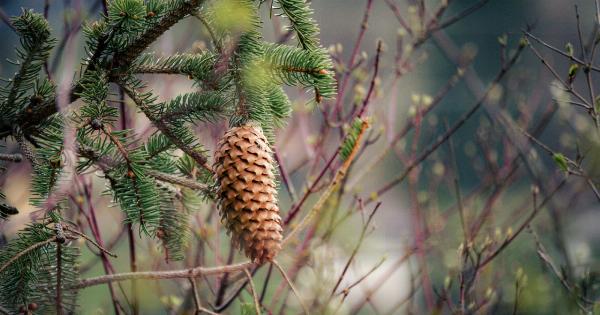Asthma is a chronic respiratory condition affecting millions of people worldwide. It is characterized by the inflammation and narrowing of the airways, leading to symptoms such as wheezing, shortness of breath, and coughing.
The prevalence of asthma has been on the rise in recent decades, especially in urban areas. Many factors contribute to the development and exacerbation of asthma, including genetics, pollution, and lifestyle choices. However, emerging research suggests that increasing tree cover in neighborhoods could have a positive impact on asthma rates.
The Importance of Urban Tree Cover
Urban areas are known for their extensive hardscapes, with concrete, asphalt, and buildings dominating the landscape. This built environment not only contributes to the urban heat island effect but also affects air quality.
Pollutants from vehicle emissions and industrial activities tend to accumulate in urban areas, leading to poor air quality, which can trigger asthma symptoms. The lack of green spaces and vegetation exacerbates this issue.
Trees play a crucial role in urban ecosystems, and their benefits extend far beyond their aesthetic appeal. They have a significant impact on air quality by capturing and filtering pollutants from the atmosphere.
Through a process called photosynthesis, trees absorb carbon dioxide and release oxygen, thereby reducing the concentration of greenhouse gases and improving air quality. Furthermore, tree canopies provide shade, which helps to lower temperatures in urban areas, reducing the heat island effect.
The Link between Tree Cover and Asthma Rates
Several studies have investigated the relationship between tree cover and asthma rates in different neighborhoods.
One such study conducted in New York City found that neighborhoods with higher tree densities had lower rates of asthma-related emergency department visits. The presence of trees was associated with a decrease in the number of hospitalizations and emergency room visits for asthma patients.
Another study conducted in Toronto, Canada, analyzed the impact of street trees on asthma prevalence. The researchers found that the asthma prevalence rate was significantly lower in neighborhoods with a higher number of street trees.
They concluded that increased tree cover in urban areas can contribute to reducing asthma prevalence by improving air quality and mitigating the urban heat island effect.
How Trees Reduce Asthma Symptoms
There are several mechanisms through which trees can potentially lower asthma rates and alleviate symptoms:.
1. Improving Air Quality
As mentioned earlier, trees act as natural air filters, absorbing pollutants such as nitrogen dioxide, ozone, and particulate matter.
By reducing the concentration of these harmful substances in the air, trees can help create a cleaner and healthier environment for asthma sufferers. Cleaner air means fewer asthma triggers and potentially fewer asthma attacks.
2. Enhancing Microclimate
Trees play a crucial role in regulating the temperature and humidity of their surroundings. They provide shade, which can significantly lower surface temperatures, reducing the heat island effect in urban areas.
High temperatures and increased humidity can worsen asthma symptoms, so the presence of trees can help create a more comfortable and asthma-friendly microclimate.
3. Stress Reduction
Studies have shown that spending time in green spaces and nature has a calming effect on our minds and bodies. Tree-filled neighborhoods provide a sense of tranquility and relaxation, offering residents a respite from the stresses of urban living.
Stress is known to trigger and exacerbate asthma symptoms, so living in a greener environment may potentially reduce the severity and frequency of asthma attacks.
4. Psychological Benefits
The aesthetic value of trees and green spaces cannot be underestimated. Trees add beauty to neighborhoods, creating an inviting and pleasant atmosphere.
Research suggests that exposure to natural environments, such as tree-lined streets or parks, can positively affect mental health and well-being. Improved psychological well-being can indirectly contribute to asthma management by reducing stress levels and promoting healthier lifestyle choices.
Challenges and Considerations
While the idea of planting more trees to lower asthma rates seems promising, there are several challenges and considerations to keep in mind:.
1. Tree Selection
Not all tree species are equally effective in reducing air pollution. Some trees are more efficient at capturing and filtering pollutants, while others may release allergenic pollen that could trigger asthma symptoms.
Careful consideration must be given to selecting the appropriate tree species to maximize the desired benefits while minimizing potential drawbacks.
2. Tree Maintenance
Planting trees is just the beginning; their ongoing care and maintenance are vital for their long-term survival and effectiveness.
Regular tree pruning, watering, and protection from diseases and pests are necessary to ensure optimal tree health and functioning. Communities and local authorities must allocate sufficient resources to tree maintenance programs to reap the benefits discussed above.
3. Urban Infrastructure
Many urban areas lack suitable spaces for tree planting due to limited soil volume, inadequate sunlight, or space constraints. It is essential to assess and address these infrastructure limitations to facilitate tree establishment and growth.
Innovative solutions like green roofs and vertical gardens can also be explored to maximize tree cover in densely populated neighborhoods.
The Importance of Community Involvement
Increasing tree cover and improving asthma rates cannot be achieved by planting trees alone. It requires active community involvement and engagement. Here are some ways communities can contribute:.
1. Participatory Tree Planting Programs
Engaging community members in tree planting initiatives fosters a sense of ownership and pride in the neighborhood.
Local authorities and organizations can organize tree planting events and encourage residents to participate and contribute to greening their community.
2. Education and Awareness
Raising awareness about the benefits of trees and their potential impact on asthma rates is crucial.
Community workshops, educational campaigns, and outreach programs can help residents understand the importance of tree cover in their neighborhood and motivate them to support tree planting initiatives.
3. Greening Schoolyards
Planting trees and creating green spaces in schoolyards can have a significant impact on children’s health. Exposure to green environments not only improves air quality but also encourages physical activity and enhances overall well-being.
Conclusion
Increasing tree cover in neighborhoods has the potential to lower asthma rates and improve overall respiratory health. Trees offer a range of benefits such as improved air quality, enhanced microclimate, stress reduction, and psychological well-being.
However, careful planning, tree selection, and ongoing maintenance are essential to maximize the positive impact of trees on asthma management. Community involvement and awareness play a vital role in creating sustainable and healthy urban environments. By joining forces and planting more trees, we can strive towards healthier neighborhoods and better respiratory health.






























